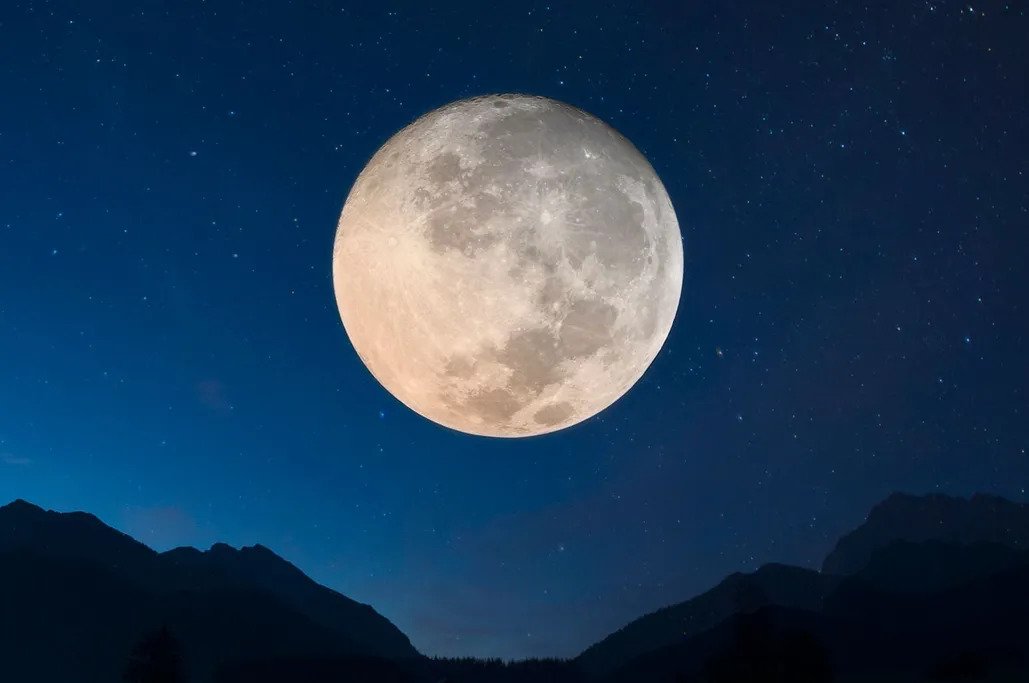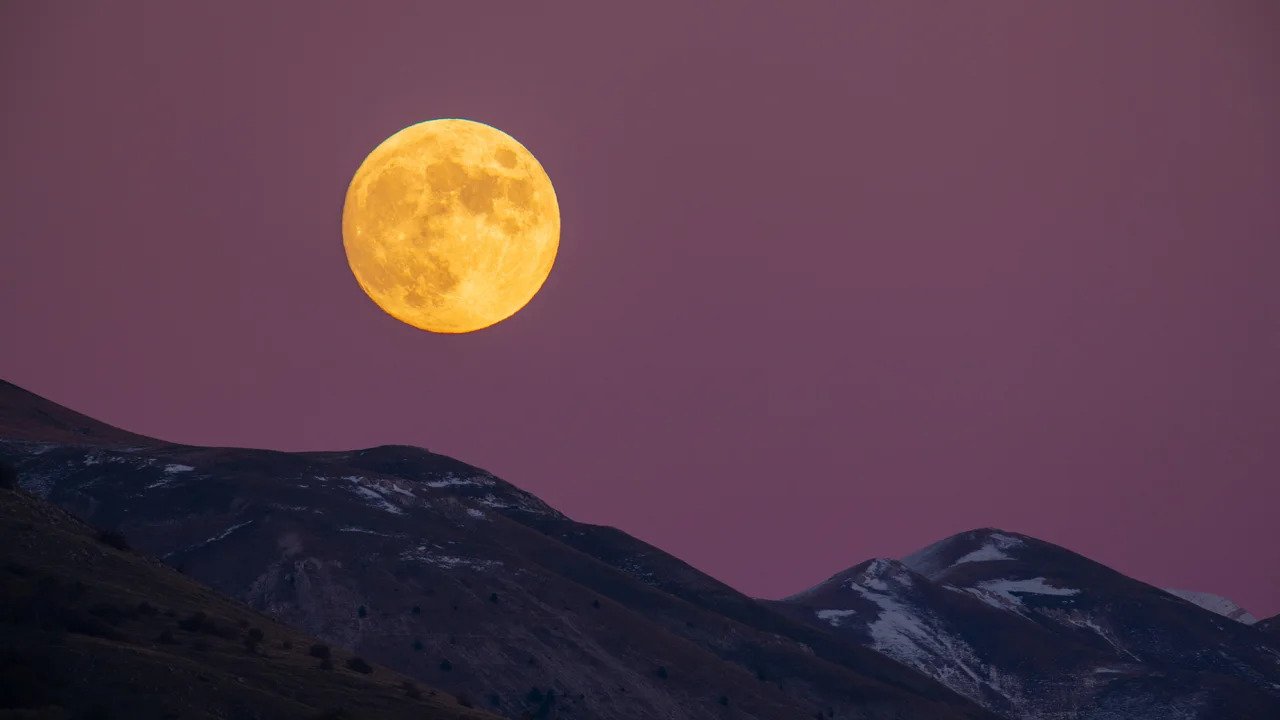November's Beaver Moon Will Shine Bright This Weekend From The 26th To The 28th
November's beaver moon will shine bright this weekend from the 26th to the 28th, providing a captivating spectacle. According to EarthSky, the moon will reach its fullest stage early on Monday morning, peaking at 4:16 a.m. ET.
Author:Rhyley CarneyReviewer:Paula M. GrahamNov 27, 20239.1K Shares123.8K Views

November's beaver moon will shine bright this weekend from the 26th to the 28th, providing a captivating spectacle. According to EarthSky, the moon will reach its fullest stage early on Monday morning, peaking at 4:16 a.m. ET.
"The upcoming full Moon (the Beaver Moon)will look like the familiar full Moon, however the specific features are always a little different from one Moon to the next," said Dr. Noah Petro, chief of NASA’s planetary geology, geophysics and geochemistry lab, in an email.
The movement of the moon known as libration, which causes a slight shift in the viewing angle of the side facing Earth, results in variations in the appearance of full moons each month, explained Petro.
Weather permitting, individuals situated north or south of the equator will have the opportunity to witness the beaver moon, as it will appear visually full for approximately one day before and after reaching its peak, Petro noted.
For an optimal moon-watching experience, Petro suggests selecting a location with an unobstructed view of the sky, away from trees, buildings, and bright lights. While observing the moon requires no special equipment, the use of binoculars or a telescope can enhance the visibility of finer details, he added.
“„When people look at the moon, I hope they first take in that it’s the same moon that their grandparents, great-grandparents, and so on have seen. For millennia, humans have looked to the moon, and it’s looked similar for all of human history.- Dr. Noah Petro
Petro highlighted two ongoing NASA space initiatives related to the moon. The Lunar Reconnaissance Orbiter, in orbit for more than 14 years, is actively constructing a 3D map of the moon's surface. Meanwhile, the Artemis II mission is scheduled for a late 2024 launch, intending to send four astronauts on a journey around the moon and back - a significant undertaking as it marks the first attempt to fly humans near our closest celestial neighbor since 1972.
The name "beaver moon" is thought to be a reference to the appearance of this full moon, mirroring the behavior of the industrious beaver retreating to its lodge in anticipation of winter. During the heyday of the North American fur trade from the 1500s to the 1800s, November coincided with the beaver trapping season, given the thicker coat of the animal during this time, as noted by The Old Farmers' Almanac.
The Tlingit community refers to the November full moon as the "digging moon," signifying the period when animals start preparing for winter. The Cree identify it as the "frost moon," while the Anishinaabe term it the "freezing moon," reflecting the imminent cold temperatures of the winter season, according to the almanac.
Seeing The Moon In Alabama
For enthusiasts of moongazing or those who relish activities illuminated by the full moon, this weekend holds promise. However, if you're in law enforcement or mental health and typically anticipate heightened activities during a full moon, brace yourself for an active weekend.
The first moon with a full appearance will grace the early morning sky this Sunday, reaching its largest view around 3:16 a.m. Central Standard Time (Alabama time). As morning twilight begins around 6 a.m. and full sunrise unfolds around 7 a.m., viewing becomes progressively challenging.
A similar scenario repeats on Monday, with the actual full moon occurring at 3:16 a.m. CST. Should you miss it, another opportunity arises to witness what seems like a full moon early Tuesday morning.
Throughout history, various groups have assigned different names to full moons for diverse reasons. The upcoming full moon has been dubbed The Beaver Moon, the Moon before Yule, the Oak Moon, Kartik Purnima (the full Moon of the Hindu lunar month of Kartik), Karthika Deepam, Loy Krathong (Thailand), Bon Om Touk ("Boat Racing Festival"), and Ill (or Il) Poya.
Tips for full moon enthusiasts in Alabama:
- The optimal time for viewing is early Monday, depending on cloud cover, but early Sunday and Tuesday are also acceptable.
- Step outside around 2:45 a.m. to allow your eyes to adjust to the darkness for the best viewing experience. Viewing later is possible but may not capture the full brilliance due to interference from the dawning sun, starting around 6 a.m.
- Choose a location with minimal light pollution, such as open spaces with few trees and buildings.
- Dedicate at least 30 minutes for your eyes to fully adapt to the dark.
- No special equipment or precautions are necessary for this viewing.
As a side note, many Italians consider the full moon to be a romantic event.
Remaining Celestial Events For 2023
The Farmers' Almanac designates the cold moon on December 26 as the last full moon of the year.
Regarding meteor showers, the American Meteor Society anticipates the continuation of the Leonids lighting up the night sky until their conclusion on December 2. For those seeking more celestial displays, two upcoming meteor showers are set to peak next month:
- Geminids: December 13-14
- Ursids: December 21-22

Rhyley Carney
Author

Paula M. Graham
Reviewer
Latest Articles
Popular Articles
